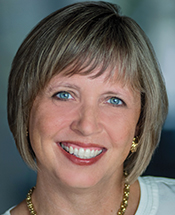Beyond the Headend — It’s a Game of Numbers
By Sandy Howe
We measure business performance through numbers. They tell us about our customers, guide us in our technology decisions and show us where to improve. Opex. Capex. EBITA. ROI. Number of subscribers. Speed of network. Number of nodes. Peak times. Energy consumption. Energy 2020.
Here Are Numbers You Should Know:
- The Americas region has 783.9 million internet users and continues to grow.
- By 2020 the number of connected devices will exceed 50 billion in the U.S.
- Speeds have increased 17 times in the last 16 years. And, we still need more bandwidth.
To stay competitive, service providers are increasing bandwidth to improve service performance and customer satisfaction. With this, network architectures are changing. Distributed Access Architecture (DAA). Fiber Deep. Virtual Segmentation. Remote PHY.
As networks evolve, challenges change. The headend is no longer a major focus for technology and financial decisions. We’re not focused on space, power consumption and heat levels at the headend. We’re focused on the access network and need to examine how changes there will impact operators’ total cost of ownership.
We ask, “With the need for more bandwidth and a distributed architecture bringing intelligence into the access networks, which numbers might grow?” Energy consumption should not increase at the same rate as we’re growing bandwidth. SCTE•ISBE Energy 2020® program commits to decreasing power consumption by 20% and energy costs by 25%. These are great environmental decisions and business decisions. With a focus on energy conservation and bottom-line numbers, we must find ways to increase bandwidth and keep energy costs down.
Energy conservation can come from several measures: Equipment that uses less power; operational changes that improve efficiencies and of course, alternative energies. Since 73-83% of the industry’s energy consumption is in the access network power supplies and edge facilities, we need innovative technologies that create savings. The two aspects of power that can impact consumption and costs are the power consumption of active devices and the efficiency of the power supply unit (PSU) in active devices.
How can you dramatically decrease the cost of power in the access network as the number of users, devices, and network speeds increase? Work smarter. Use the right amplifier bricks with the correct gain. Use high efficiency PSU in active devices and reduce the current through the hybrids during off-peak moments.
Today’s access equipment keeps power requirements constant – and yet, consumption of services varies depending on time of day, seasonality and situational demands. Statistics show that in the average home, the network needs to run at peak capacity only five hours a day.
Data usage is not constant and yet power usage remains constant. Having equipment within the network that can adapt to network traffic means savings. With these new technologies, the numbers show that installing an efficient state-of-the-art amplifier that adjusts power usage provides a savings of 40% (344kWh) per year, per amplifier. The equipment intelligently knows when to switch off power, adapting to traffic on the network — delivering high performance during peak hours and during off-peak hours when data usage is much lower, the CCAP equipment switches off QAM carriers.
So, let’s look at the numbers… A 40% savings in power, with an average cost of $0.07 per kWh and an average network of 50,000 amplifiers… savings = over $1M a year. I think we all agree, a great number for any bottom line!

 Sandy Howe
Sandy Howe
EVP and President, Americas Region,
Technetix, Inc.
Sandy Howe is Executive Vice President and President, Americas Region at Technetix, a global leader in advanced technology products, solutions and services for the telecommunications industry. She is responsible for all functions for the U.S., Canada, Latin America and the Caribbean and partners with the CTO and Chief Product Officer to develop solutions specific to the Americas, focusing on innovation that transforms broadband networks to deliver a better user experience. Sandy is on the Executive Board of WICT and a member of the SCTE Foundation Board.
Shutterstock



